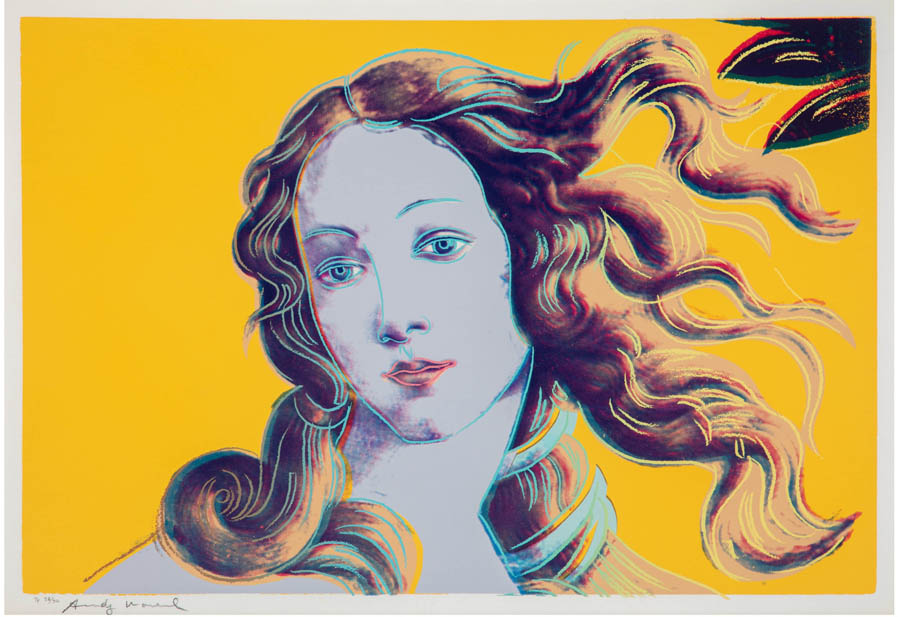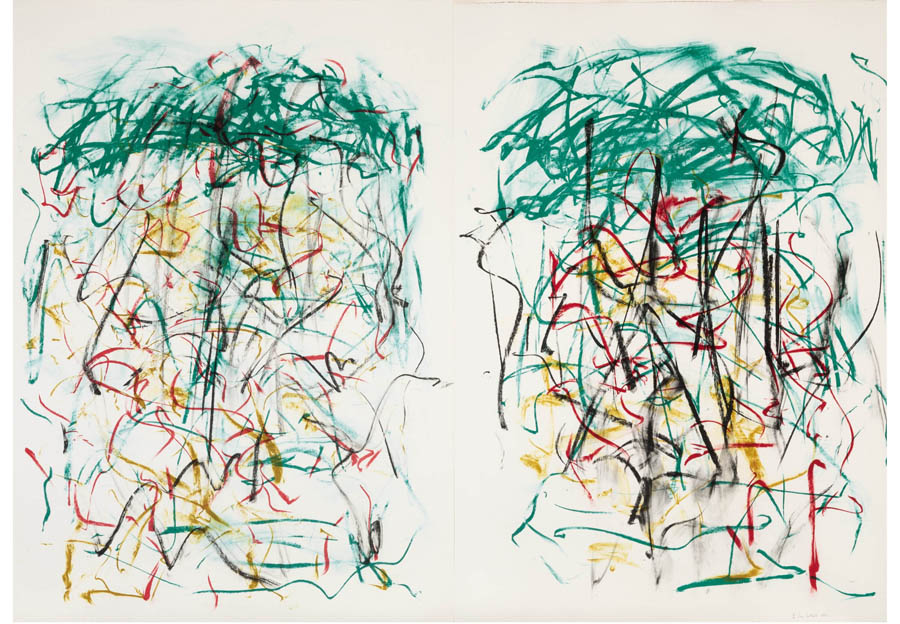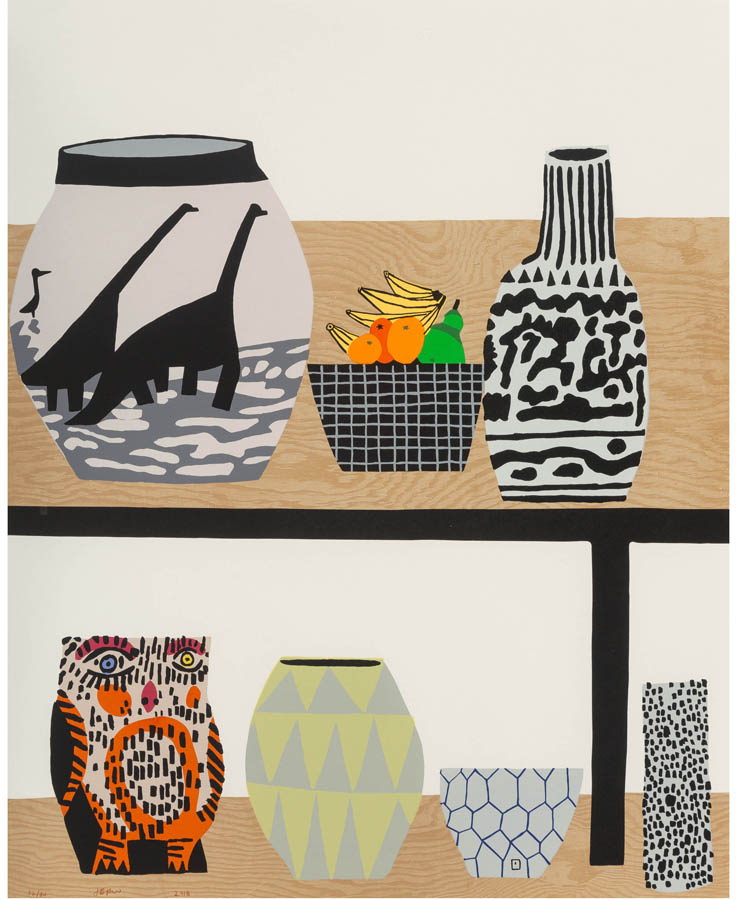FROM ARTISTS HAVING A MOMENT IN THE MARKET TO TIPS FOR STORING AND DISPLAYING ARTWORK, HERE’S WHAT YOU NEED TO KNOW ABOUT THIS POPULAR COLLECTING CATEGORY
By Andrew Nodell
Beginning an art collecting journey can be daunting. Not only are you investing your money and time in selecting works for your home, but you’re ultimately going to be living with the pieces, so they must resonate on a personal level. While one-of-a-kind paintings can fetch astronomical sums in galleries and at auction, the area of Prints & Multiples offers a comfortable entry point for even the most novice collector. Editions from renowned artists like Andy Warhol and Ed Ruscha or lesser-known contemporary masters can be an ideal way to launch a collection. But before you start bidding, it’s best to seek the advice of a seasoned professional, so we asked Rebecca Van Norman, Consignment Director of Prints & Multiples at Heritage Auctions, to help guide us through building and maintaining a collection.
Andy Warhol’s ‘Sandro Botticelli, Birth of Venus, 1482,’ from ‘Details of Renaissance Paintings,’ 1984, realized $325,000 in an April 2024 Heritage auction. ‘It was a trial proof, which are hugely competitive because they are not identical to the actual edition,’ says Heritage’s Rebecca Van Norman.
The Importance of Buying What You Love
Regardless of the category, it’s always important to be happy with what you collect. Time and again, new collectors will think they have a grasp on what they love only to be disappointed by a work over time – or as it hangs in relationship to the rest of their collection. “You have to start with buying what you like,” Van Norman says. “A lot of times people will dive into art collecting and they’ll start with a big, beautiful abstract work, but after several months of staring at it they realize they don’t like abstract art. After spending thousands of dollars, they don’t even want to exhibit it.”
Before you start making art purchases, Van Norman recommends attending gallery openings, auction previews and museum exhibitions to determine the types of works that most interest you. For instance, you may be attracted initially to Robert Motherwell’s abstraction, but with more knowledge and exposure you might realize your tastes lie with the political statements of Banksy. “Pin down what it is you enjoy,” Van Norman says, “because from there you won’t ever make any mistakes. The art market can be unpredictable, so whatever happens will be less impactful to you because you bought what you enjoy.”
Joan Mitchell’s ‘Sunflowers I,’ from the last series she printed before her death in 1992, sold for $81,250 in an April 2024 Heritage auction.
Safe Bets for Collecting Prints & Multiples
Though it’s best to lead with your heart and not prospective ROI when building an art collection, it’s wise to make informed decisions with any big purchase. There are certain tried-and-true artists, including Andy Warhol, Keith Haring and Pablo Picasso, who remain solid season after season despite potential market volatility. “The blue-chip artists always hold their value,” Van Norman explains. “They’ve held strong over the last decade.” But what if you’re looking to collect artists and styles that are au courant? According to Van Norman, the recent spike in sales for female artists has cooled – with the exception of abstract expressionists Helen Frankenthaler and Joan Mitchell – but portraiture and works by Black artists remain strong.
In addition, during election years, trends tend to gravitate toward art that has a political or social commentary. That includes what people are collecting as well as what contemporary printmakers are creating. “Around election years like this one, you see a lot of activism in art,” Van Norman adds. “Those works tend to hold their value for a while, which is good if you’re going to start cultivating a collection.”
Events like the Me Too movement and the overturning of Roe v. Wade have influenced artists like Jenny Holzer and Banksy to create works with a social tie-in. These artists have always done political art; they just get more attention in an election year because they are very active and appealing. Many collectors are also interested in works that illustrate an artist’s personal struggle. In the case of popular and collectible printmaker Jonas Wood, his has been with mental health. In the fall of 2023, Heritage offered a group of Keith Haring prints that came close to breaking records and resonated with the LGBTQ community for their commentary on the AIDS crisis of the 1980s. But Haring’s body of work is a commentary on issues beyond gay rights and AIDS. Sometimes it’s the environment, technology, women or other topics of the day.
Keith Haring’s ‘Andy Mouse,’ 1986, a set of four screenprints starring a cheeky cartoon hybrid of Andy Warhol and Mickey Mouse, realized $945,000 in an October 2023 Heritage auction. Van Norman calls Haring a ‘juggernaut’ in the world of Prints & Multiples.
Caring for Your Collection
Prints are produced on paper containing lignin, which starts breaking down the moment it comes in contact with oxygen. It’s an unavoidable part of nature. This explains the yellowing and browning that occurs on prints that have been improperly mounted and displayed. But ensuring your print is professionally set with archival materials will help slow the aging process. “Archival matting, archival hinges and archival papers don’t have the lignin in it that causes paper to break down,” Van Norman explains. “And even if you’re not going to frame it, at least get your print into an archival mat, which will keep it safe for years and years to come.”
► More Collector’s Guides
For additional collecting advice on topics ranging from fine minerals and rare books to art glass and action figures, visit our dedicated Collector’s Guide page.
Sun is another atmospheric foe to your prints. If you are going to exhibit a work on paper, ensure the room has low humidity and indirect sunlight, which can cause colors to attenuate. “People will want to put their vibrant David Hockney print in their sunroom, but then they discover it doesn’t even look like the same David Hockney in five years and the sun has not only faded the print, but its value as well,” Van Norman adds. If you are unsure about where to display works in your home, she recommends advisory and conservation companies that will examine your space and offer suggestions on best practices.
But what if the damage is done? Professional conservators can try to reverse some of the aging, but this depends on the type of ink an artist used and the level of damage. “I like to say conservators dabble in magic,” Van Norman says. “They can review your artwork and tell you what can be done depending on the type of screenprint. Sometimes Andy Warhol used heavy ink or acrylic, which can be more difficult to treat than a Keith Haring, who used a different kind of ink.” The American Institute for Conservation offers a nationwide database of accredited conservators who are experts in their field and have spent years training in the medium. As Van Norman warns, “Conservation is not a DIY situation. Don’t get onto Google for home remedies; you’re going to mess it up.”
Jonas Wood is another printmaker popular with collectors. His ‘Shelf Still Life,’ 2018 sold for $23,750 in an October 2021 Heritage auction.
When to Consult a Professional Appraiser
If you think your print could have value, the internet can be a useful resource for basic information, but Van Norman cautions against setting expectations based on a search of similar works. Like the conservation database, online research can lead you to the experts, but only a professional appraiser can determine the appropriate value of an individual artwork. She recalls an instance in which a client believed his Art Nouveau poster was worth $30,000 after an online search, but she had to gently inform him it might have been if someone had not fully glued it to a backing board decades prior, diminishing the value to around $1,000. “I’d rather somebody come to me and say, ‘I don’t know what it is that I have,’ and let me help them than have to disappoint their set expectations.”
For inquiries regarding Prints & Multiples, contact Rebecca Van Norman at 214.409.1772 or RebeccaV@HA.com.
 ANDREW NODELL is a contributor to Intelligent Collector.
ANDREW NODELL is a contributor to Intelligent Collector.





